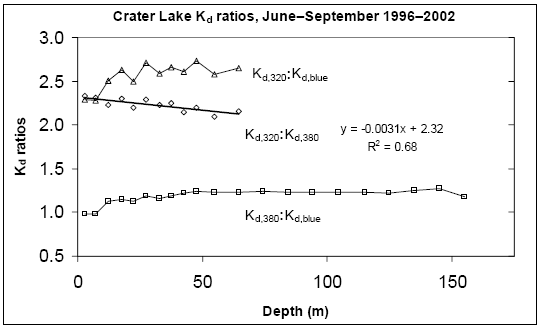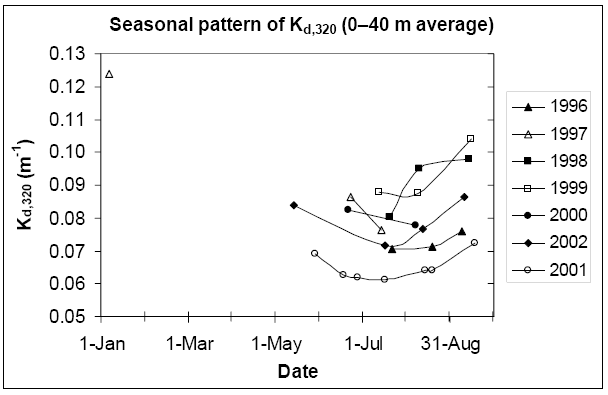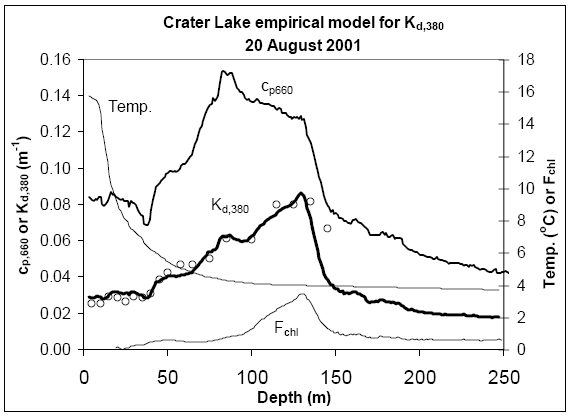Figure 6. Crater Lake Kd ratios from data in Figure 5 (June–September 1996–2002, LI-1800uw). Least squares regression for Kd,320:Kd,380 versus depth (m), y = -0.0031x + 2.32, r2=0.68. Average 0–10 m ratios: Kd,320:Kd,blue, 2.28 (SE=0.007), Kd,380:Kd,blue, 0.98 (SE=0.002), Kd,320:Kd,380 = 2.32 (SE = 0.012). Average 0–40 m ratios: Kd,320:Kd,blue = 2.52 (SE=0.058); Kd,380:Kd,blue = 1.11 (SE=0.029); Kd,320:Kd,380 = 2.27 (SE = 0.016).
Figure 7A. Seasonal pattern of Kd,320 in Crater Lake, 1996–2002 (averaged 0–40 m). Typically the minimum Kd occurred in July or August. The highest Kd values during this period were in 1998–1999, the lowest in 2001.
Figure 10A. Crater Lake rain (inches per month at Crater Lake NPS Headquarters) and chlorophyll-a (0.45 um filter), averaged 0–30 m and 40–140 m (1984–2002 July–August).
Figure 11A. Crater Lake empirical model for Kd,380 versus depth based on bio-optical signals (20 August 2001). Temperature and depth from Seabird CTD; chlorophyll fluorescence (Fchl, relative units) from Wetlabs WetStar fluorometer;cp660 from SeaTech transmissometer (cw=0.411 m-1); Kd,380 (open circles) from LI-1800uw scans. Model: Kd,380= 0.40*Fchl + 0.36*cp660.





